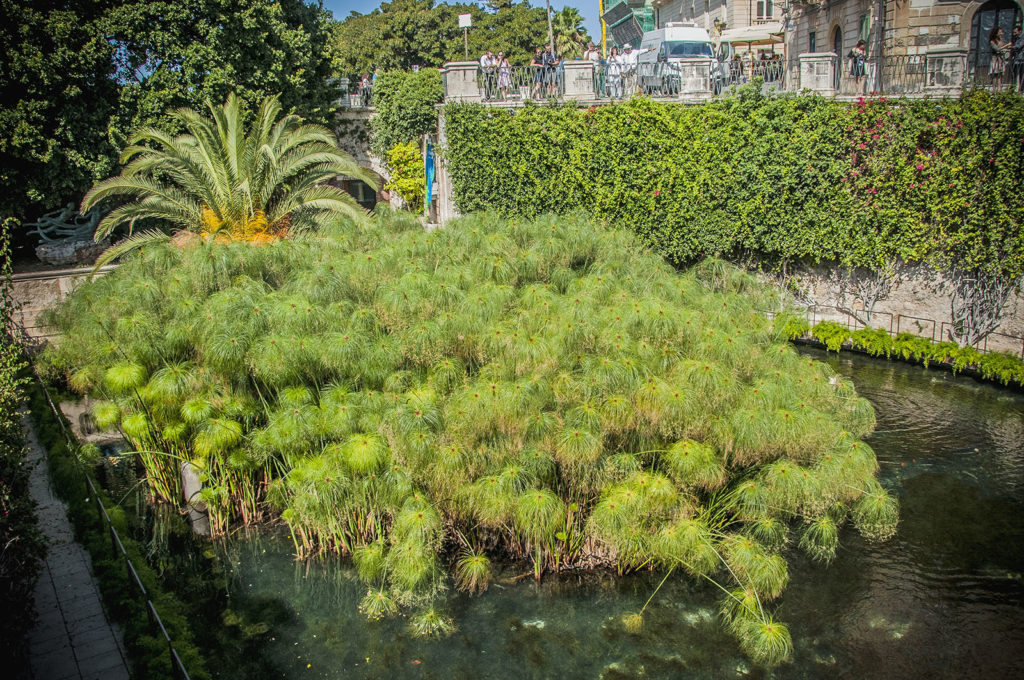The origin of Ortygia is closely linked to the worship of water. In fact, the island rises on the Porto Grande of Syracuse and is characterised by the presence of the Fountain of Arethusa.
This curious source of freshwater has the unique aspect of pouring out onto the shore. The beauty of this stretch of water has impressed the imagination of poets and writers for millennia.

According to Greek mythology the origin of the spring is linked to the fate of the nymph Arethusa, known throughout Greece for her beauty.
The nymph was very good at running and swimming. One day, after a long run in the woods, Arethusa decided to cool off in a beautiful stream surrounded by large plants: the river Alpheus. At the end of her bath, the girl began running again, when a voice asked her to stop. It was Alpheus, the river god, who had fallen in love with her. Arethusa was terrified and called to Artemis for help. So the goddess wrapped her in a cloud and blew hard towards Sicily; as she approached Ortygia, she transformed Arethusa into a freshwater spring.
Alpheus was completely in love with the nymph and asked his father, Oceanus, for help. Convinced of his son’s sincere love, Oceanus opened the waters of the Ionian Sea and allowed Alpheus to cross Sicily and reach his love.
This is why the water from the spring tastes salty, due to the infiltration of the sea. The stretch of water also has another unique aspect: the presence of many wild papyrus plants. Freshwater fish and mallard ducks also swim in the shallow waters of the spring.